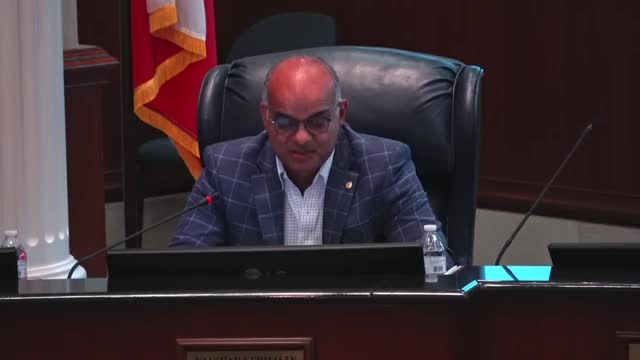City Council Divided Over Controversial Roundabout Proposal
August 06, 2024 | Sugar Land, Fort Bend County, Texas
This article was created by AI summarizing key points discussed. AI makes mistakes, so for full details and context, please refer to the video of the full meeting. Please report any errors so we can fix them. Report an error »

In a recent city council meeting, significant concerns were raised regarding the proposed phase three of a traffic improvement project, particularly the introduction of a roundabout at the intersection of Soldiers Field and First Colony Boulevard. Council members expressed skepticism about the necessity of the roundabout, citing a lack of accidents at the intersection and questioning the timing of the project amidst existing traffic issues in the area.
One council member, who drives the route multiple times daily, highlighted that the intersection does not appear on a list of the top 15 accident-prone locations in the city. They suggested postponing phase three until the effectiveness of phases one and two could be assessed, especially since the city has an additional $1.8 million in funding from the county. The member emphasized that while they support the first two phases of the project, they believe it would be prudent to wait on the roundabout until its necessity is clearer.
Another council member echoed these sentiments, expressing a strong preference for phases one and two while opposing phase three. They pointed out the current traffic chaos in the area and questioned the need for further disruption with the proposed roundabout.
In response to the council's concerns, Jason Vaughn, the traffic engineering manager, provided insights from a recent traffic impact analysis (TIA). He explained that the intersection had a history of \"failure to yield\" crashes, exceeding state standards for safety. Vaughn noted that the study indicated the roundabout would significantly improve traffic flow and safety, moving the intersection from a lower level of service to a much better rating.
The discussion highlighted a divide among council members regarding the best approach to traffic management in the community, with some advocating for immediate action based on safety data, while others called for a more cautious approach to avoid unnecessary disruptions. The council is expected to continue deliberating on the project as they weigh the benefits of the proposed improvements against community concerns.
One council member, who drives the route multiple times daily, highlighted that the intersection does not appear on a list of the top 15 accident-prone locations in the city. They suggested postponing phase three until the effectiveness of phases one and two could be assessed, especially since the city has an additional $1.8 million in funding from the county. The member emphasized that while they support the first two phases of the project, they believe it would be prudent to wait on the roundabout until its necessity is clearer.
Another council member echoed these sentiments, expressing a strong preference for phases one and two while opposing phase three. They pointed out the current traffic chaos in the area and questioned the need for further disruption with the proposed roundabout.
In response to the council's concerns, Jason Vaughn, the traffic engineering manager, provided insights from a recent traffic impact analysis (TIA). He explained that the intersection had a history of \"failure to yield\" crashes, exceeding state standards for safety. Vaughn noted that the study indicated the roundabout would significantly improve traffic flow and safety, moving the intersection from a lower level of service to a much better rating.
The discussion highlighted a divide among council members regarding the best approach to traffic management in the community, with some advocating for immediate action based on safety data, while others called for a more cautious approach to avoid unnecessary disruptions. The council is expected to continue deliberating on the project as they weigh the benefits of the proposed improvements against community concerns.
View full meeting
This article is based on a recent meeting—watch the full video and explore the complete transcript for deeper insights into the discussion.
View full meeting
